Andrew Farley
Diffusion Dataset Generation: Towards Closing the Sim2Real Gap for Pedestrian Detection
May 16, 2023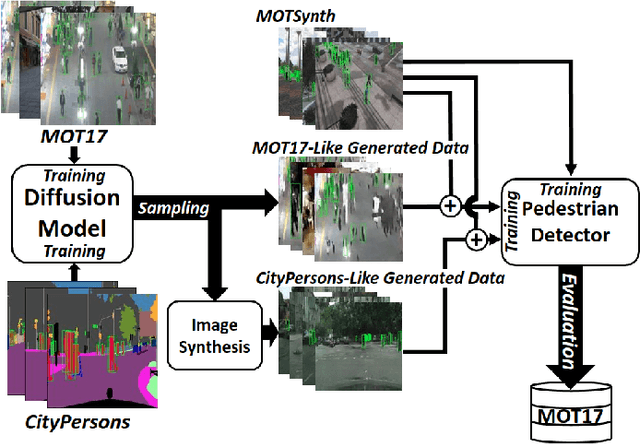
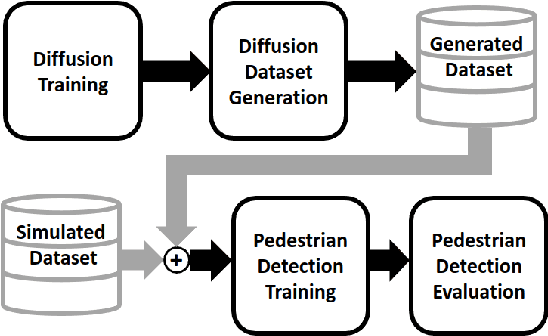
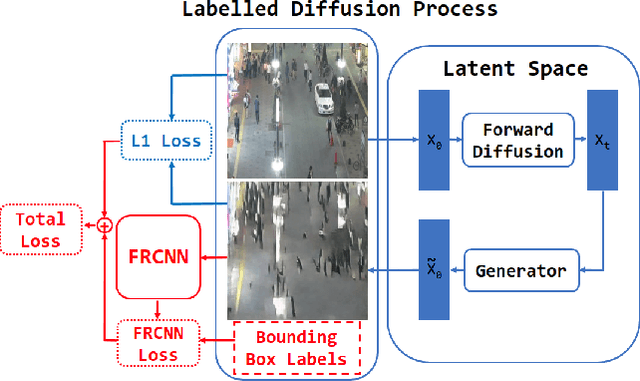
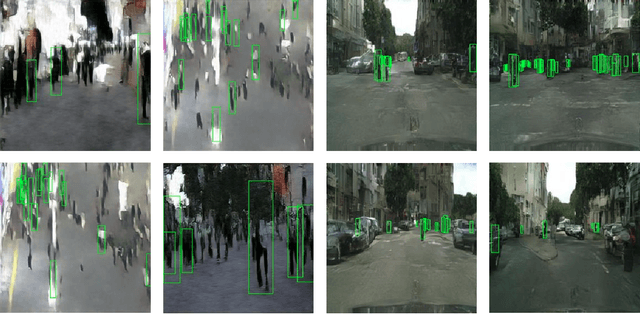
Abstract:We propose a method that augments a simulated dataset using diffusion models to improve the performance of pedestrian detection in real-world data. The high cost of collecting and annotating data in the real-world has motivated the use of simulation platforms to create training datasets. While simulated data is inexpensive to collect and annotate, it unfortunately does not always closely match the distribution of real-world data, which is known as the sim2real gap. In this paper we propose a novel method of synthetic data creation meant to close the sim2real gap for the challenging pedestrian detection task. Our method uses a diffusion-based architecture to learn a real-world distribution which, once trained, is used to generate datasets. We mix this generated data with simulated data as a form of augmentation and show that training on a combination of generated and simulated data increases average precision by as much as 27.3% for pedestrian detection models in real-world data, compared against training on purely simulated data.
Multiscale Crowd Counting and Localization By Multitask Point Supervision
Feb 21, 2022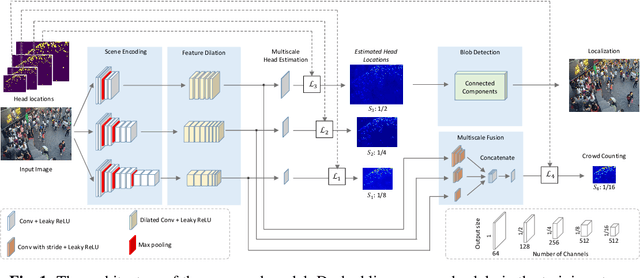
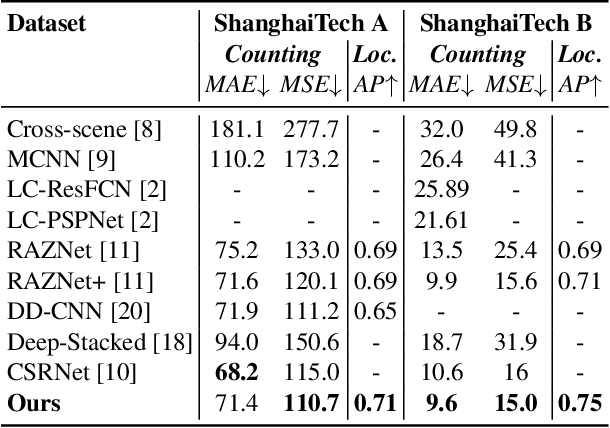

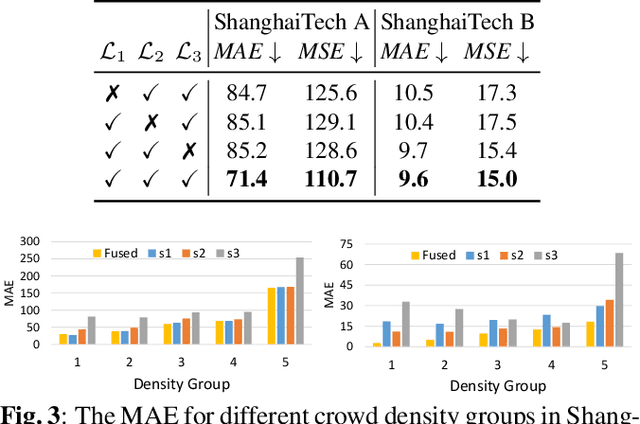
Abstract:We propose a multitask approach for crowd counting and person localization in a unified framework. As the detection and localization tasks are well-correlated and can be jointly tackled, our model benefits from a multitask solution by learning multiscale representations of encoded crowd images, and subsequently fusing them. In contrast to the relatively more popular density-based methods, our model uses point supervision to allow for crowd locations to be accurately identified. We test our model on two popular crowd counting datasets, ShanghaiTech A and B, and demonstrate that our method achieves strong results on both counting and localization tasks, with MSE measures of 110.7 and 15.0 for crowd counting and AP measures of 0.71 and 0.75 for localization, on ShanghaiTech A and B respectively. Our detailed ablation experiments show the impact of our multiscale approach as well as the effectiveness of the fusion module embedded in our network. Our code is available at: https://github.com/RCVLab-AiimLab/crowd_counting.
 Add to Chrome
Add to Chrome Add to Firefox
Add to Firefox Add to Edge
Add to Edge